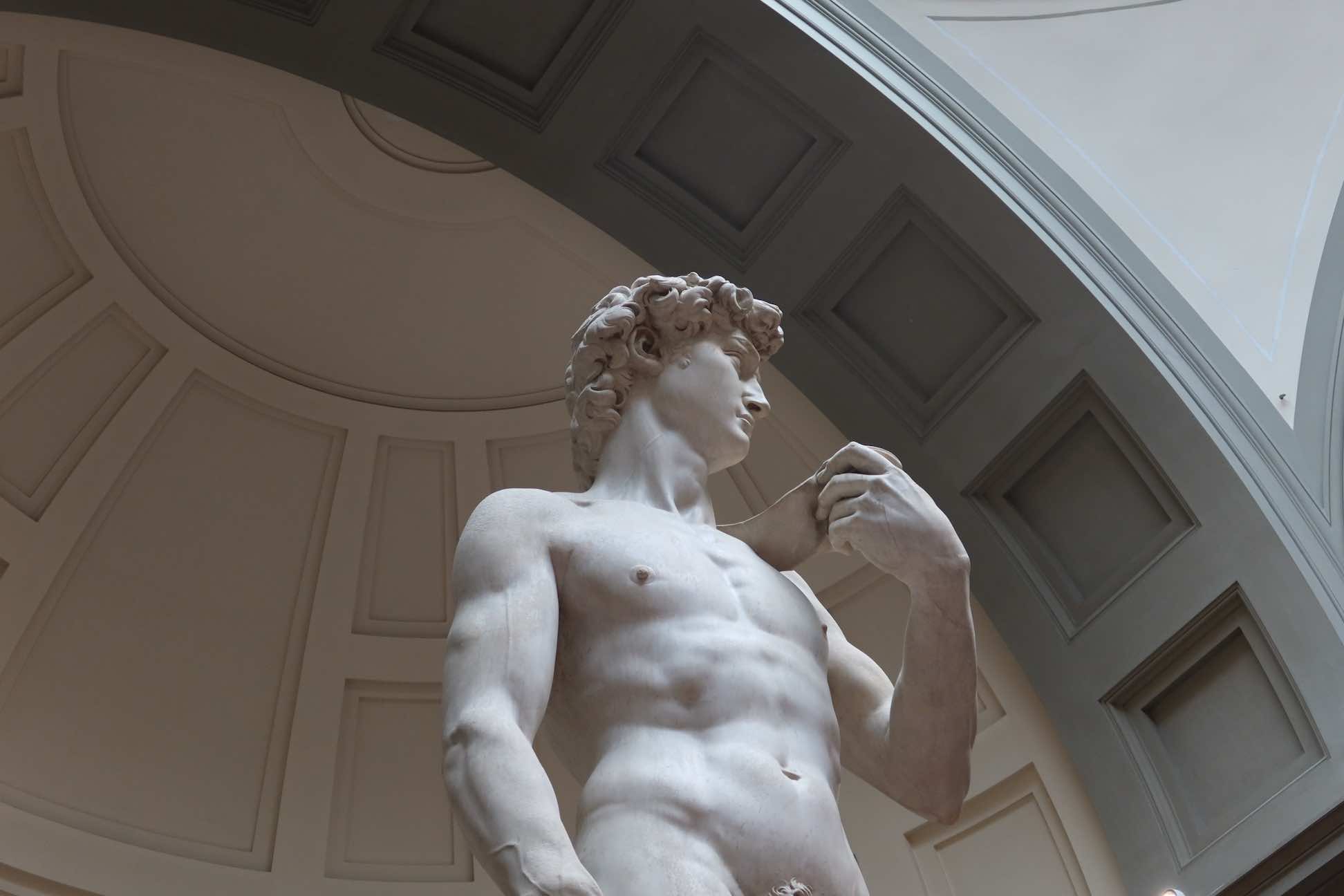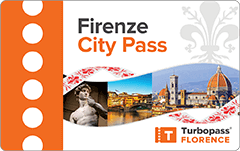- Sign up & get a FREE ebook Subscribe Today!
- Florencewise Home Page
- medici family
Who Were the Medici Family That Ruled Florence?
Are you visiting Florence and interested in learning more about the famous House of Medici family?
 The legacy of the Medici family is everywhere in Florence, such as at the Basilica di San Lorenzo and surrounding piazza
The legacy of the Medici family is everywhere in Florence, such as at the Basilica di San Lorenzo and surrounding piazzaJoin us as we cover everything from the Medici family’s rise to power, to their ongoing influence over Italy’s most artistic city!
Everything you need to know about the Medici family and how they shaped Florence
If you’re heading to Florence anytime soon, you’re bound to see architecture or artwork commissioned by the Medici family.
But who were the famous Medici family that influenced Florence for several centuries?
Well, you’re about to find out!
From feuds and exile to mass investment in cultural landmarks, you’re about to understand why the Medici family are such an enormous part of Florence’s rich history.
Keep reading as we dive into these topics:
- The origins of the Medici family
- The founding of the Medici dynasty
- Lorenzo the Magnificent
- Exile and a triumphant return to power
- Catherine de Medici
- The Medici Grand Dukes
- Where to find the Medici legacy in Florence today
The origins of the Medici family
The Medici family came from agricultural roots around the Mugello Valley region before they emigrated to the then-obscure city of Florence in 1230.
Well, at least that’s the date when they were first mentioned in official documentation!
It’s worth noting that the Medici family weren’t the only noble family in Florence, but we’ll get to that later.
After moving to Florence, the family ingrained itself in Florentine politics.
While there isn’t much detailed information about their political involvement in the 13th century, the Medici family used their wealth to invest in Florence’s economy.
Once they did this, they gained a strong foothold in the banking industry before helping to kick-start the Italian Renaissance by acting as patrons to many artists.
Want to see the best of the art on offer in the birthplace of the Renaissance?
Take this private art experience tour and truly immerse yourself in everything Florence has to offer!
The founding of the Medici dynasty
The true birth of the Medici dynasty came in 1360 when Giovanni di Bicci was born.
While he didn’t make much progress in Florence until later on (due to his age), Giovanni di Bicci was responsible for cementing the family’s banking legacy with the help of his uncle, Vieri de’ Medici.
Using the family name, Giovanni worked through Florence’s existing banking industry until he became a respected junior partner.
Giovanni ran the Medici Bank for several years and carefully taught his son Cosimo the Elder to maintain the family’s wider influence in Florentine society.
Cosimo was also an influential figure in Florence’s political scene and helped the Medici Bank maintain its cash flow throughout its life.
Not only did Cosimo maintain the family’s position as high-ranking citizens, but he used his shrewd business sense to expand the bank’s reach into Africa and greater Europe.
By stretching the Medici Bank to far-flung places, Cosimo turned the bank into the all-important papal bank.
This allowed Cosimo to oversee the finances for the entire Roman Catholic Church, and by extension, Pope John XXIII himself.
This impressive political influence and papal link made the Medici family incredibly influential.
It goes without saying that the family became financially secure.
But they could also pressure debtors with excommunication if they failed to pay up.
As the church was a central pillar in Florentine society back in the medieval period, this was a hugely influential position to be in.
Check out our top tips for making the most of your time in Florence:
Cosimo the Elder and his presence in the Arts
While this might make Cosimo sound like a negative historical figure, he strongly believed in the importance of democracy and the presence of elected officials.
Cosimo was a central member of the Signoria (an elected body that managed the city’s affairs) and believed that any kind of war was extremely bad for trade.
So, he established a mutual treaty with nearby Lombardy to end conflict and establish a solid base for cultural growth.
Because of this passion for culture, he also reinvested his wealth into Florence’s cultural sphere as a patron of the arts.
He supported budding artists like Donatello, commissioning the famous Donatello sculpture of David and Brunelleschi’s dome to finish the Florence cathedral.
So, he certainly wasn’t a miserly dragon sitting on a pile of wealth as you might expect!
The Medici family’s line continued with Cosimo's son, Piero di Cosimo de’ Medici who became the de facto ruler of Florence when his father died in 1464.
He didn’t live particularly long as he dealt with extremely poor health (likely gout, which explains his nickname of Piero il Gottoso!).
Lorenzo the Magnificent
While Piero may not have had much impact on Florence’s politics, his son Lorenzo de Medici certainly did.
Lorenzo was groomed for power from an early age and was tutored by both the Gentile de’ Becchi and the humanist philosopher Marsilo Ficino.
While he was young, he also headed on several trips to Rome to meet the pope and other key political figures.
When his father died in 1469, Lorenzo de Medici simultaneously led both the Republic of Florence and the family’s Medici Bank at just 20 years old.
During his time in power, Lorenzo developed strong links with artists like Michelangelo, Botticelli, and Leonardo Da Vinci.
In fact, Michelangelo even lived with the Medici family for three years and Lorenzo is often credited for guiding the artist’s career in its early stages.
Shortly after rising to power, he also married Clarice Orisini (who belonged to a large, Roman noble family).
As the Medici’s dominance over Florentine life and politics continued to grow, rival families began to feel rather put out.
Their most notable rivals were the Pazzi family, who fronted a conspiracy group with Pope Sixtus IV to attack Lorenzo and his brother Giuliano in the Cathedral of Santa Maria del Fiore.
They failed to take control of the government and the Pazzi’s assets were confiscated.
However, Giuliano was killed and the conspiracy started a two-year war with the papacy that caused serious issues for Florence.
After the attack, Lorenzo managed to maintain good relations with the Ottoman empire and major trading partners.
But a series of bad loans led to the eventual collapse of the Medici Bank.
This understandably left the family in a precarious position.
🤙 Roaming in Italy? 📱
Get yourself an Italian eSIM for calls, messages and data when traveling here.
Save on data charges with plans from just 19€ from Holafly - our recommended eSIM provider - click here to find out more.
Exile and a triumphant return to power
The Medici family remained relatively untouchable until Piero the Unfortunate took power.
Piero had a short-lived reign between 1492 and 1494, which was cut short by his decision to sacrifice an old French alliance for a new one with Naples.
The French king decided to invade Tuscany and Piero rushed to obtain a quick (but disastrous) agreement to end the conflict.
The Florentine people weren’t best pleased with the arrangement and revolted against the Medici family.
When they ransacked the Medici Palace, Piero and the family were forced to flee.
 The central palace of the Medici family was ransacked at one of the most challenging times in their history
The central palace of the Medici family was ransacked at one of the most challenging times in their historyThe Medici situation might have seemed hopeless at this stage.
But luckily, Lorenzo’s second son Giovanni became Pope Leo X and retook Florence in 1512.
During the family’s exile, Giovanni rebuilt his political connections and had a strong connection with the Spanish.
Once the French armies were defeated in Italy by Spanish fighters, the Medici family were able to take the throne in Florence once more.
Pope Leo X was largely responsible for the reformation of the Catholic Church, and sold many indulgences to fund renovations of St. Peter’s Basilica in Rome.
This was understandably controversial, and cardinals even attempted to poison him in 1517.
The pope’s actions led to Martin Luther posting his 95 Theses which condemned these supposed “abuses” of the church.
This is often seen as the main seed for the Reformation period.
 The decisions taken in St Peters Basilica in Rome by the two Medici popes ended up shaping our world
The decisions taken in St Peters Basilica in Rome by the two Medici popes ended up shaping our worldAfter Leo X died, Pope Clement VII (AKA: Giulio de’ Medici) became the head of the Catholic Church.
During his papacy, he asked Michelangelo to paint The Last Judgment in the Sistine Chapel, and also sent a letter of excommunication to Henry VIII forbidding him to remarry.
Giulio’s obsession with Europe’s political sphere and his alignment with the League of Cognac meant that he couldn’t adequately face the rising challenge of the Lutheran reformation movement.
Plus, when Charles V of Spain triumphed over the French at Pavia, his forces besieged Italy in the Sack of Rome in 1527.
Rome was poorly defended and Clement was forced to surrender in June and cede to Charles.
This point marked the official end of the Italian Renaissance.
Catherine de Medici
Catherine de Medici was Piero the Unfortunate’s granddaughter, but she’s better known for being the queen consort to Henry II of France.
She was an extremely influential part of political life in France and kept much of the monarchy and state institutions functional during her husband’s rule.
After her husband died, her son Charles was in line to inherit the French throne.
He was very young however and so needed a regent to rule with him until he came of age.
Catherine hatched a cunning plan to be appointed regent herself.
She summoned the rival Guise family and the House of Bourbon, who were the main candidates for the regency position.
When they arrived, she accused Antoine de Bourbon of treason.
Antoine’s brother had already been sentenced to death for the same crime, so he naturally ceded the regency to Catherine.
Want to learn more about the Medici family and their impact on Florence?
Join this very special tour and follow in the footsteps of the Medicis across the city!
During her time as the queen of France, Catherine exerted huge influence over France’s rule.
She tried to maintain French control at all times and created intense conflict between the Roman Catholic and Protestant factions of France.
By doing so, she incited years of civil war that destabilized much of Western Europe.
The tensions came to a head with the St. Bartholomew's Day Massacre, where Catholics ransacked Protestant areas of Paris.
The violence spread across France and the massacre increased tensions between England and France.
While Catherine’s son Charles let her guide him during his rule, his successor Henry did not.
He gave concessions to French protestants in 1567’s Edict of Beaulieu.
With no heir, the Valois Dynasty that Catherine hoped to maintain abruptly ended.
No matter what season you visit Florence, here are 4 essential things we recommend never leaving home without:
Disclosure: If you make a purchase through a link on this page, I may receive a small commission - at no extra cost to you. Thank you for supporting my site!
The Medici Grand Dukes
Back in Florence, Cosimo I (otherwise known as the great-great-grandson of Lorenzo the Magnificent) became duke of the city after Alessandro de’ Medici was assassinated.
Cosimo dismissed many of the most important Florentine families from influential positions and replaced them with officials who came from more agricultural origins.
He also created an excellent judicial system and police force along with roads, ports, and drainage works to strengthen the city.
On August 27, 1569, Pope Pius gave Cosimo I the title of Grand Duke which marked the start of the Grand Ducal Line.
 The grand equestrian statue in Piazza della Signoria is of Cosimo I, testament to the impact he had on Florence
The grand equestrian statue in Piazza della Signoria is of Cosimo I, testament to the impact he had on FlorenceGrand Duke Cosimo I brought the arts back to Florence in a huge way.
Not only did he build the Uffizi Gallery (originally used as an administrative center) but he also expanded the Pitti Palace and completed the Boboli Gardens.
If that wasn’t impressive enough, he also founded the Academy and the Society of Art and Design in 1563.
His passion for the arts was clear, and he continually invested Medici money in culture until his death in 1574.
 Cosimo's passion for history and the arts meant he brought together an incredible collection, including treasures like this huge ancient Roman vase - now known as the Medici vase
Cosimo's passion for history and the arts meant he brought together an incredible collection, including treasures like this huge ancient Roman vase - now known as the Medici vaseCosimo I left behind a handful of descendants who continued to rule Florence but eventually the Medici family tree died out.
The last Medici was Anna Maria Luisa de Medici, the daughter of Cosimo III and Marguerite Louise d’Orleans.
As Anna Maria Luisa was infertile, the Medici Line ended with her in 1743.
Before her death, she created the Family Pact with the Hapsburg-Lorraine to confirm that all of Florence’s most precious art would stay within the city’s walls.
The Grand Duchy of Florence then passed to members of the Austrian Habsburg family, before being caught up in the Napoleonic wars in the early 1800's.
Following that Florence was involved in the Italian independence wars before becoming part of the new country of Italy in 1860.
Between Anna Luisa’s death and reunification, the country experienced:
- Napoleon’s invasion of Italy in 1796
- The fall of the Republic of Venice in 1797
- Napoleon’s occupation of Rome in 1809
- The Piedmont revolt in an attempt to remove Austrians from Italy in 1821
- The political Young Italy Movement in 1831
- The election of Pope Pius IX in 1846 and his support for unification that helped popularize the movement
- The Third Italian War of Independence in 1866
- The defeat of Napoleon III in the French-Prussian War in 1870
- Rome replacing Florence as Italy’s Capital in 1870
Florence weathered these tumultuous events and much more largely because of the strong foundation the Medici family established over their many decades of influence.
Where to find the Medici legacy in Florence today
 The Medici family shaped much of the city of Florence, with large palaces like Palazzo Vecchio a testament to their power and wealth
The Medici family shaped much of the city of Florence, with large palaces like Palazzo Vecchio a testament to their power and wealthAs you can see, the Medici family were a huge part of Florence’s history.
So, if you’re wondering where to see their influence around the city, you’ll want to work your way through this list of hot-spots:
- Palazzo Medici Riccardi (the first Medici palace in Florence)
- The San Marco museum
- The Basilica of San Lorenzo (the façade was commissioned by Cosimo de’ Medici)
- The Medici Chapels (that contain the tombs of the Medici Grand Dukes)
 The incredibly detailed Chapel of the Princes forms part of the Medici Chapels and is absolutely worth visiting!
The incredibly detailed Chapel of the Princes forms part of the Medici Chapels and is absolutely worth visiting!- Palazzo Vecchio (the home of Cosimo I)
- The Uffizi Gallery (contains most of the Medici’s art and portrait collections)
- The Pitti Palace and Boboli Gardens
- The Costume and Fashion Museum within the Pitti Palace (if you want to see the funeral clothes of Garzia de’ Medici)
- The Medici Villas
Florencewise's Top Travel Resources
Ready to book your trip to Florence? Take a look at these helpful links to companies we use and trust:
- Keep your travel spending simple with the Wise card, which removes all the worry about exchange rates and high transaction fees all over the world
- Search for and book your perfect accommodation
- Our complete guide to what to pack for Florence
- The number one travel accessory, a multi-point travel adapter and voltage converter
- Browse a huge range of tours in Florence and beyond
- Experience unique tours and special access to Florence's most popular sights
- Protect yourself with comprehensive travel insurance
Within this post there are some affiliate links for products and services. For more details about our affiliate policy click here.
Receive the latest Florence news, travel tips, insights and more!
Simply sign-up today for our free newsletter:
We are committed to respecting your data. Click for our Privacy Policy.
Comments? Questions? Suggestions?
Please come over to the private Facebook group and join in the conversation.
You will often find me there, happy to answer your questions / comments!
You will also meet other Florence lovers and experts, too.
What are you waiting for?



















